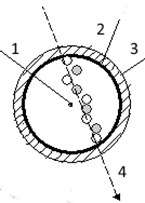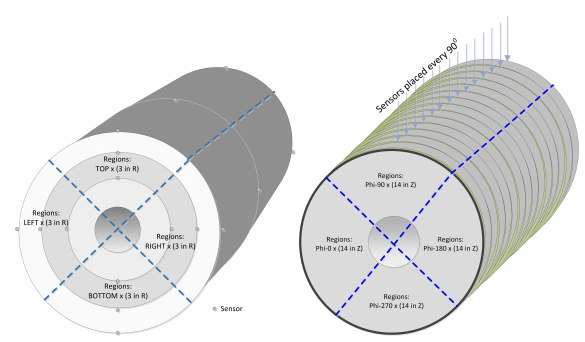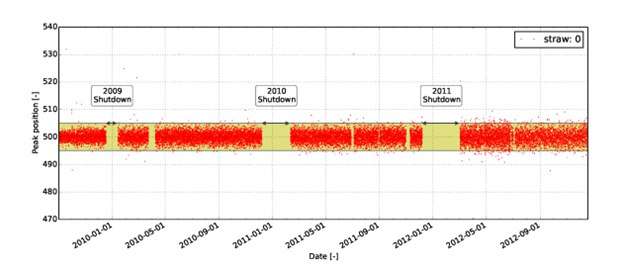Researchers develop Gas Gain Stabilization System for TRT ATLAS

The Transition Radiation Tracker (TRT) is part of the ATLAS inner detector at the CERN LHC.The basic tracker element is named "straw." Straw is a simple gas detector, a long, thin (~ 1 m in length) drift tube filled with a gas mixture. The anode is a gold-plated tungsten wire passed inside the tube. The conductive layer on the inner surface of the drift tube functions as a cathode.
The principle of operation is simple: A particle ionizes the gas mixture and electrons generated under the influence of a strong electric field drift to the anode and make a signal. The electric field inside the tube creates a potential about 1.5 kV.

The TRT consists of about 350,000 drift tubes, and scientists, receiving a signal from each reacted element, can not only determine the particle, but also recreate its track.
An important factor for the TRT work is the correct gain of each drift tube. To control the gain coefficient, scientists from the ATLAS collaboration have developed the Gas Gain Stabilization System (GGSS). GGSS adjusts the voltage depending on external factors and particle parameters. For example, when the temperature in the tube changed, GGSS changes voltage on the correction value. Thus, gain coefficient is adaptively changing.
GGSS also provides high-voltage correction depending on the particle parameters. If the peak after the spectrum fitting is out of range, the system reduces voltage; otherwise, the voltage increases.
The system showed excellent performance during Run I (the first LHC work session) and currently continues to work in Run II.

More information: B. Mindur et al. Gas gain stabilisation in the ATLAS TRT detector, Journal of Instrumentation (2016). DOI: 10.1088/1748-0221/11/04/P04027
Provided by National Research Nuclear University




















